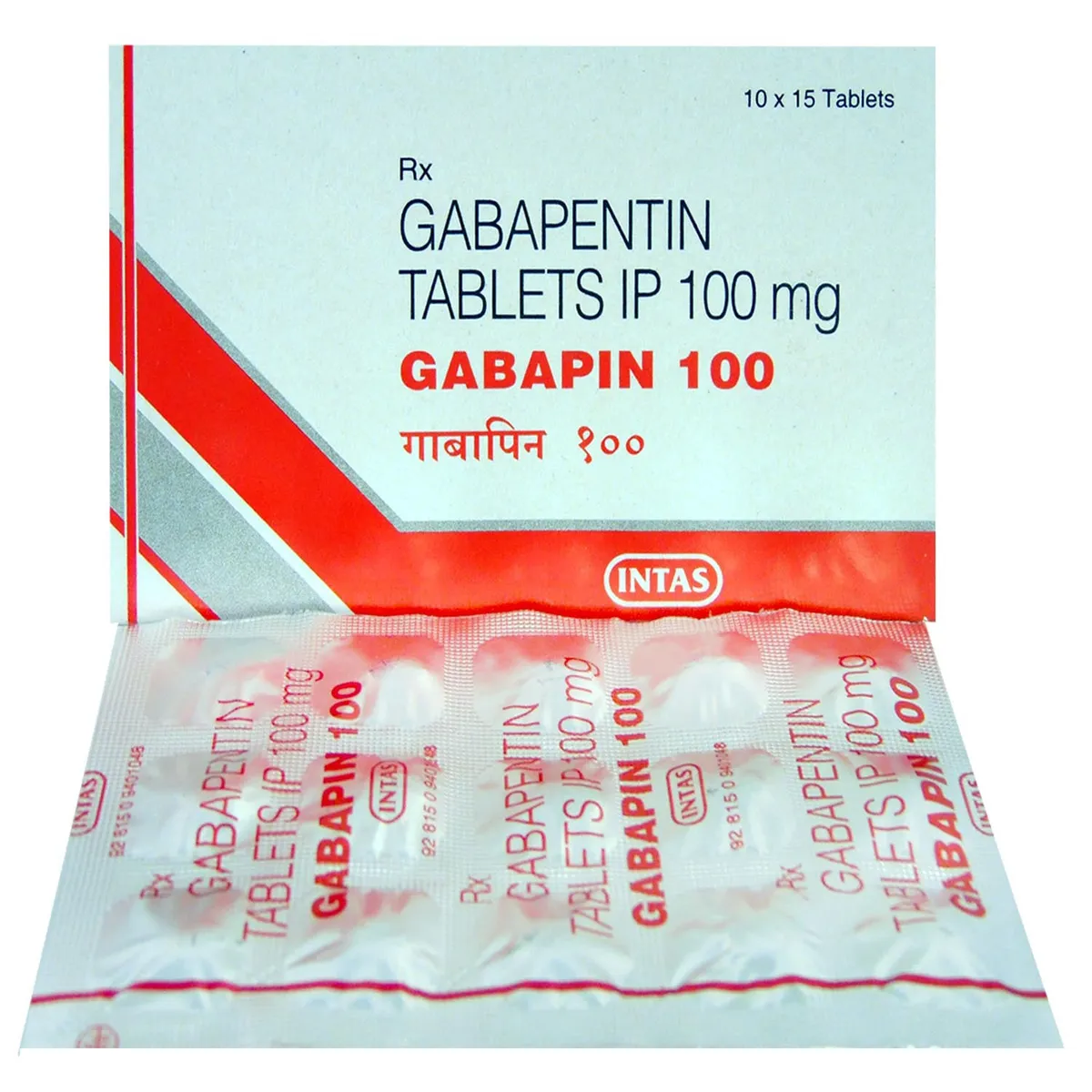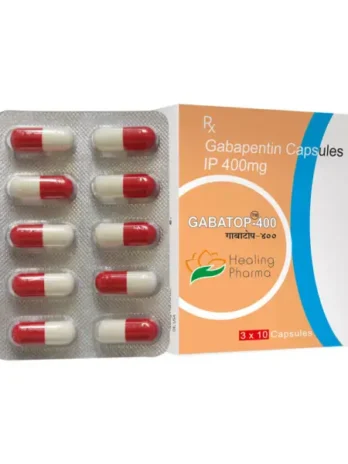Gabapin 100mg Tablet (Gabapentin)
Price range: $25.00 through $60.00
Description
Introduction
Gabapin 100mg Tablet is a prescription medication containing Gabapentin, a drug primarily used to treat neuropathic pain and seizure disorders. Gabapentin belongs to the class of anticonvulsants or antiepileptics, and it is commonly recommended for conditions that involve nerve damage or irregular nerve signaling.
Whether you’re a patient trying to understand your medication or a medical professional looking for a clear explanation, this guide covers everything you need to know about Gabapin 100mg, including its uses, dosage, side effects, and precautions.
What is Gabapin 100mg?
Gabapin 100mg is a low-dose Gabapentin tablet used to manage nerve-related conditions. Manufactured by Intas Pharmaceuticals, this tablet helps reduce nerve pain and controls seizure activity by stabilizing electrical signals in the nervous system.
Active Ingredient:
- Gabapentin IP – 100mg
Gabapentin is not structurally related to GABA (gamma-aminobutyric acid), although it affects similar pathways in the brain.
Common Uses of Gabapin 100mg
Gabapin 100mg is typically prescribed as part of a larger treatment plan. It’s most effective when combined with lifestyle changes and/or other medications.
- Neuropathic Pain
Used to treat nerve pain caused by:
- Diabetic neuropathy
- Postherpetic neuralgia (pain after shingles)
- Spinal cord injuries
- Sciatica or nerve compression
- Partial Seizures
Gabapentin is used as adjunctive therapy for controlling partial (focal) seizures in patients who are already on other antiepileptic medications.
- Restless Legs Syndrome (RLS)
Though not always the first-line treatment, Gabapin is occasionally prescribed to reduce the urge to move the legs at night.
- Off-Label Uses
Gabapentin is often used off-label for:
- Anxiety disorders
- Fibromyalgia
- Migraine prevention
- Insomnia linked to nerve pain
How Does Gabapin 100mg Work?
Gabapin 100mg works by altering how nerves communicate in the brain and spinal cord. It binds to voltage-gated calcium channels, reducing the release of excitatory neurotransmitters like glutamate and substance P. This helps dampen excessive nerve signaling, leading to pain relief and seizure control.
Dosage and Administration
General Dosage Guidelines:
- Adults (Neuropathic Pain): Start with 100–300mg once a day. May increase gradually.
- Epilepsy: Typically started at a low dose (100–300mg) and increased under medical supervision.
- Elderly Patients: May require dose adjustments based on kidney function.
Administration:
- Take with or without food.
- Swallow whole with water; do not crush or chew.
- Take at the same time each day for optimal results.
Note: Gabapin 100mg is a starting or maintenance dose. Do not change the dose or stop treatment without consulting your healthcare provider.
Side Effects of Gabapin 100mg
Gabapin is generally well tolerated, especially at lower doses like 100mg, but some side effects can occur.
Common Side Effects:
- Drowsiness
- Dizziness
- Fatigue
- Nausea
- Unsteady movements
- Dry mouth
Rare But Serious Side Effects:
- Mood changes (depression, suicidal thoughts)
- Breathing difficulty (especially with other CNS depressants)
- Allergic reactions (rash, itching, swelling)
- Vision changes
- Swollen hands or feet
If you experience severe side effects, discontinue use and seek medical advice immediately.
Precautions and Warnings
Before starting Gabapin 100mg, discuss the following with your doctor:
- Kidney Issues
Gabapentin is excreted through the kidneys. Patients with impaired kidney function may require dose adjustments.
- Mental Health Conditions
Tell your doctor if you have a history of depression, bipolar disorder, or suicidal thoughts.
- Pregnancy and Breastfeeding
Gabapentin should only be used during pregnancy if clearly needed. It can pass into breast milk, so consult your doctor before use.
- Alcohol and Sedatives
Avoid alcohol and other CNS depressants, which can increase drowsiness and risk of respiratory depression.
Drug Interactions
Gabapin 100mg may interact with:
- Antacids: Reduce absorption. Take Gabapin 2 hours after antacids.
- Opioids (e.g., morphine): Can enhance sedative effects.
- Sleep aids and sedatives: May increase drowsiness.
- Other anticonvulsants: Your doctor will carefully adjust the dosage if you’re on multiple seizure medications.
Storage Instructions
- Store in a cool, dry place (below 25°C).
- Keep out of reach of children.
- Do not use after the expiry date printed on the package.
Frequently Asked Questions (FAQs)
Q1: Can I take Gabapin 100mg for anxiety?
Yes, although Gabapin is not officially approved for anxiety, many doctors prescribe it off-label for generalized anxiety disorder (GAD) or social anxiety. Consult your doctor first.
Q2: Is Gabapin 100mg habit-forming?
Gabapentin is not considered addictive, but sudden discontinuation can lead to withdrawal symptoms. Taper off under medical guidance.
Q3: How long does Gabapin take to work?
You may start to feel relief within a few hours, but it often takes several days to a few weeks for full effect.
Q4: What if I miss a dose?
Take the missed dose as soon as you remember, unless it’s almost time for the next dose. Do not double the dose to catch up.
Q5: Can children take Gabapin 100mg?
Gabapentin can be prescribed for children (especially for seizures), but dosage and suitability depend on the age and condition. Always consult a pediatric specialist.






Reviews
There are no reviews yet.